Review of clinical guidelines and cost estimates for the use of anti-epileptic drugs (AEDs) for the treatment of epilepsy
Page last updated: 25 July 2025
Background
At its September 2020 Intracycle meeting, the Pharmaceutical Benefits Advisory Committee (PBAC) recommended amending the Pharmaceutical Benefits Scheme (PBS) restrictions to allow for the first‑line use of levetiracetam (LEV) and lamotrigine (LTG) in women of childbearing potential. The recommendation followed the PBAC’s consideration of feedback from the Epilepsy Society of Australia (ESA) on best practice clinical management of epilepsy for these patients. The restriction changes took effect on 1 January 2021. The PBAC noted that the previous PBS restrictions for LEV and LTG restricted access to those patients who had failed to have their epilepsy controlled with other AEDs and may have resulted in prescribers continuing to use valproate (VAL) among women of childbearing potential when safer options were available. The PBAC requested that the Department provide to the Drug Utilisation Sub-Committee (DUSC):
- utilisation data and any further evidence on the broader use of other second-line AEDs, and;
- estimates of cost to the PBS of allowing first-line use of LEV and LTG in the remaining population with epilepsy (i.e. males and females of all ages).
In September 2023, the DUSC considered the Utilisation analysis of PBS-listed AEDs in a cohort of epilepsy patients.1 For the full report, including the DUSC consideration, please refer to the DUSC Public Release Document below.
- Utilisation analysis of PBS-listed AEDs in a cohort of epilepsy patients – (Word 1.6MB)
- Utilisation analysis of PBS-listed AEDs in a cohort of epilepsy patients – (PDF 1.7MB)
In April 2024,the Department commissioned the Centre for Medicine Use and Safety (CMUS), Monash University to:
- undertake a systematic literature review to identify relevant clinical guidelines for the use of AEDs for the treatment of epilepsy and compare these to the PBS restrictions and Therapeutic Goods Administration (TGA)-approved indications for these medicines, and;
- estimate the cost to the PBS of expanding the restrictions for the second-line AEDs LEV and LTG to allow their first-line use in the general Australian population with epilepsy.
[1] Note: This project was on hold for 24 months to allow the collection of sufficient PBS utilisation data following the 1 January 2021 restriction changes to LEV and LTG.
The Review of clinical guidelines and cost estimates for the use of AEDs for the treatment of epilepsy final report (“the Report”) is available below:
- Review of clinical guidelines and cost estimates for the use of AEDs for the treatment of epilepsy – (Word 811KB)
- Review of clinical guidelines and cost estimates for the use of AEDs for the treatment of epilepsy – (PDF 1.6MB)
2025 PBAC and DUSC consideration
The Report was considered by the DUSC at its April 2025 meeting. Sponsors of PBS-listed AEDs, the ESA, and the Australian and New Zealand Association of Neurologists (ANZAN), were consulted on the draft Report and utilisation and cost model (UCM) workbook prior to the April 2025 DUSC meeting. The DUSC considered that the methods used to derive the utilisation and financial estimates, and the structure of the estimates model were reliable for decision-making. DUSC advised that minor updates to model inputs should be considered.
The Report was considered by the PBAC at its May 2025 Intracycle meeting. Sponsors and stakeholders were provided with the revised Report, UCM workbook, and DUSC Minutes on 23 April 2025, and invited to provide a pre-PBAC response in line with standard PBAC processes and timelines.
Overall, the PBAC accepted the key findings from the Review of AEDs including the estimates of cost to the PBS of allowing first-line use of LEV and LTG in the general Australian population with epilepsy (the “proposed listings”). The PBAC noted the findings of the review of clinical guidelines that two Australian guidelines and most international guidelines recommend LEV and/or LTG as first-line antiseizure medications in adults with focal and/or generalised seizures.
The PBAC considered the estimated cost to the R/PBS of allowing first-line use of LEV and LTG in the general Australian population with epilepsy was reasonable ($1.2 million in 2025 increasing to $4.4 million in 2030). In addition, the proposed listings were expected to have a minimal impact on the utilisation of the more expensive third-line antiseizure medications.
The PBAC recommended amending the PBS restrictions for LEV (tablets and liquid forms) and LTG (tablets) to Restricted Benefit listings for “epileptic seizures” and removal of the following clinical criteria from the current listings: “The condition must have failed to be controlled satisfactorily by other anti-epileptic drugs; OR Patient must be a woman of childbearing potential.” This restriction change will allow the subsidised first-line use of these medicines in the general Australian population with epilepsy.
The PBAC considered there may be an unmet need to subsidise LTG for mental illnesses such as bipolar disorder. The PBAC recommended in principle extending subsidy of LTG to this indication and requested that the Department undertake further work to estimate the cost to the R/PBS of a separate Restricted Benefit listing for LTG for bipolar disorder for its consideration at a future meeting.
The Public Summary Document for this item is available below.




